Toddlers: small in size, big in self-expression. If you’ve ever tried to persuade yours into their buggy when they want to walk, you’ll know that when it comes to saying how they feel, toddlers don’t hold back! You try to coax them into sitting down, but the wails begin. It’s not just about the buggy; it’s about independence and curiosity.
Tantrums are often a toddler's way of desperately trying to communicate. When they struggle to express their feelings, frustration builds, leading to outbursts, which can be challenging for parents. We spoke with Chartered Psychologist Dr. Mark Rackley and child psychologist Dr. Margot Sunderland to learn how to help your toddler manage their emotions while also navigating your own.
Dr. Mark Rackley explains, "The 'terrible twos' and 'troublesome threes' are called that for a reason.
Children at this stage of life can struggle greatly with managing their emotions and behaviour.
"A child can have a major meltdown and not care about their environment and who is watching. This can be incredibly stressful for parents if they are on a plane, in the cinema or in the supermarket."
Dr Margot Sunderland expands, “These big feelings are totally normal. The parts of the brain that help us to think and understand how we feel aren’t developed in children. So, while we adults can moderate our feelings by thinking them through, your toddler can’t. They just react!”
Meltdowns? Totally normal. Bouncing like an overexcited ping-pong ball over a new toy? Also normal. Transforming into a weeping tornado over a denied ice cream? You guessed it—normal. While your toddler will eventually learn to manage these big emotions, there’s plenty you can do to help them along the way.
“We all need emotions,” says child psychologist Dr. Margot Sunderland. “They’re a vital tool for navigating life. And right now, in the toddler years, is the perfect time to start helping your child understand and accept their feelings.”
Helping toddlers understand and manage their emotions is crucial for their happiness, emotional intelligence, and overall well-being. Research shows that when children learn to handle their feelings effectively, they tend to do better in school, behave more positively in social settings, and grow into happier, more emotionally resilient adults. With movies like Inside Out 2 bringing children’s mental health into the spotlight, now is the perfect time to start supporting your little one in navigating their big emotions.
According to Chartered Psychologist Dr. Mark Rackley, the first step is accepting that guiding your toddler through their emotions is part of your role as a parent. “It’s important for parents to accept and acknowledge that helping their toddler manage their emotions is their responsibility,” he explains. But don’t worry—this doesn’t mean you must get it right every time. “You don’t have to be perfect at this, just good enough,” he reassures.
One simple way to help toddlers understand their feelings is through visual aids. “You can use simple pictures of happy faces, sad faces, and angry faces to help them learn the names of emotions and recognise how differently they feel,” says Dr Rackley. This kind of visual reinforcement makes emotions more tangible for young children, allowing them to express themselves when words might fail them.
It’s also essential to create a calm and patient learning environment. “Toddlers are experiencing all of this for the first time, so they can easily become overwhelmed, confused, and frustrated,” Dr. Rackley explains. Offering reassurance and support makes all the difference. “Let them know you are there to listen, support, and teach them.”
By taking small, intentional steps to help your toddler navigate their emotions, you’re laying the foundation for emotional well-being that will benefit them for years to come.
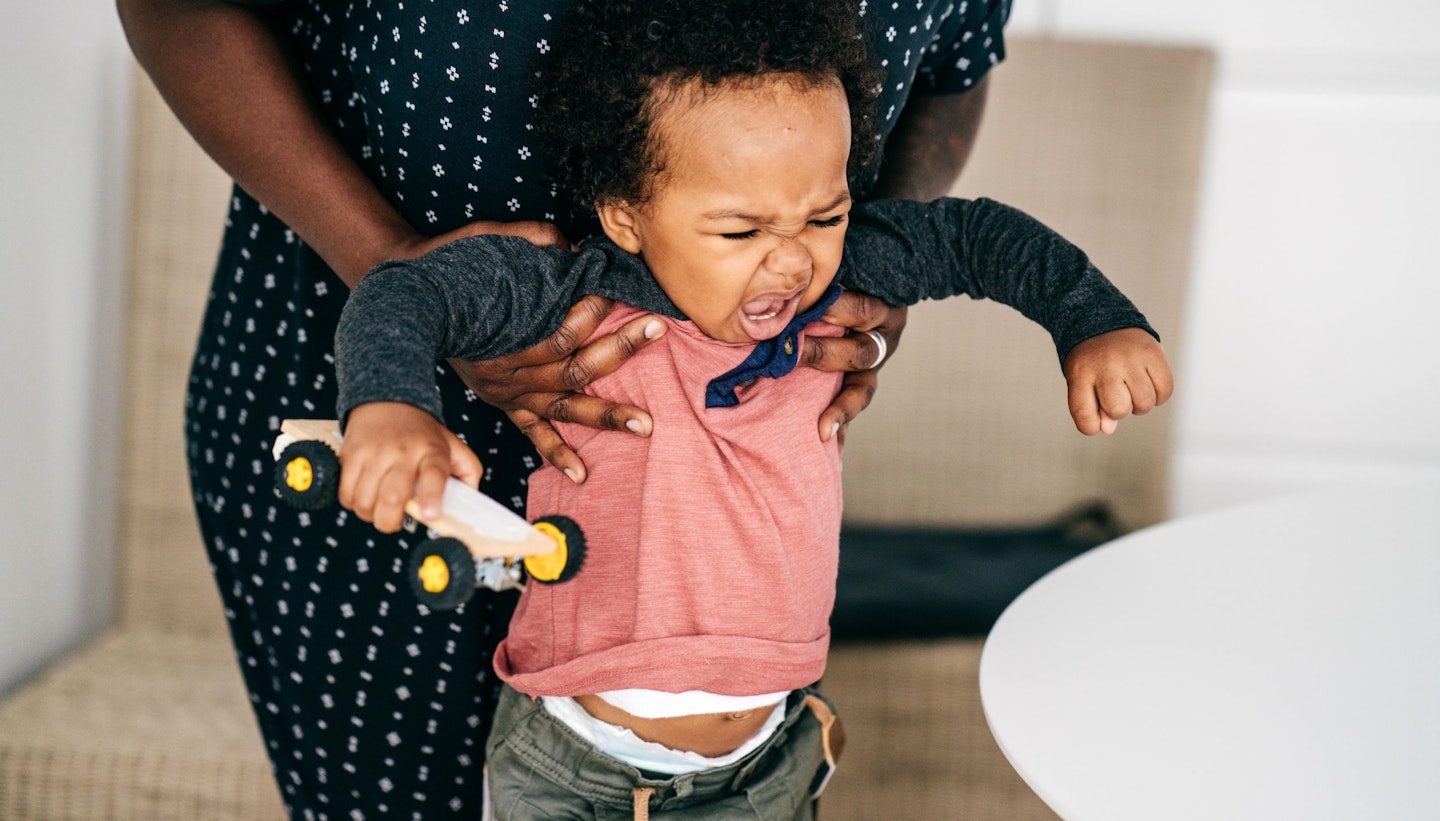
The six big toddler emotions to talk about with little kids
Here, we spoke to two leading child mental health experts to discuss practical ways parents can guide their children through different feelings, as well as suggest educational toys that can make learning about emotions fun.
Anger
When your toddler gets angry, it's often due to frustration, such as when something doesn't go their way, like a sibling taking their toy or interrupting their play.
"The intense emotion floods their system with stress hormones, making them feel overwhelmed and scared," explains Margot. Instead of trying to suppress their anger, Margot advises, "Acknowledge his anger.”
However, it's crucial to wait until your fuming toddler is completely calmed down. As Rachel Coler Mulholland, a counsellor, children's mental health expert, and author of The Birds, the Bees, and the Elephant in the Room, emphasises, "Wait until the child is all the way calmed down before you try to process what happened. This is going to take lots of practice before they can do it routinely on their own."
Once they have released their emotions, you can teach them to recognise and understand the emotion. For instance, you might say, "I know you're upset because you wanted to finish your puzzle. You're feeling frustrated."
Margot suggests that this approach "teaches them that it's okay to feel angry and shows them how to express it in a calmer manner." It also fosters a sense of understanding and reduces the fear associated with their emotions.
"If their anger leads to aggressive behaviour like hitting," Margot says, "It's okay to stop the behaviour while still acknowledging their feelings." You can say, "It's okay to feel angry, but it's not okay to hit. Let's find a different way to show how you feel."
Margot also recommends simply sitting with your toddler during their anger, as this "can help them feel more in control and less scared, making it easier for them to calm down."
Research shows that helping children articulate their feelings at a young age has long-term benefits for their brain development and helps them manage stress well later in life.
Handling these situations calmly and empathetically not only soothes your child in the moment but also lays the foundation for their emotional well-being in the future.
Fear
A dog that sniffs his ankles, a balloon popping, a door slamming downstairs… “There are all sorts of unexpected events that may scare your toddler,” says Margot. And that’s because at this age, he’s only just starting to explore the world. He may find anything he can’t control or predict scary because he hasn’t yet learned what’s dangerous and what’s not. Just think about it: if you hadn’t yet learnt that tigers bite and cats don’t, you’d probably be just as scared of a cat as you are of a tiger.
“How anxious your child gets when something unexpected happens will depend on his personality,” says Margot. “But the best way to calm a frightened toddler is to reassure him by showing him that you think that the situation is okay.” And it’s key that you don’t tell him not to be scared, but simply tell him that you feel fine about it all, using a soothing tone.
Research has shown that when a parent’s voice is gentle and melodic, it triggers the release of the feel-good hormone, oxytocin, in your child’s system.
“Soft, soothing touch, such as a massaging rub of the back, will also reduce his fear,” adds Margot.
If you can, do whatever you can to help him take control of the situation, too. “So if he’s scared of a tiny spider, give it a name,” suggests Margot, “and make up a story about it: 'This is Billy. He’s come to visit because he’s lost. He wants to know if he can live here because he loves our snuggly curtains.' You’re giving the spider a personality which makes him feel friendly rather than scary."
Try this: If your youngster has to do something new, like going to the doctor for the first time, he’ll feel less nervous if you talk him through what will happen. Use toy figures to act out what you would do at the doctor’s surgery – going to reception, sitting in the waiting room, talking to the doctor,’ says Margot. When you help your toddler understand a situation in advance, it helps him to feel more in control, and that will reduce any anxiety he might feel.
Happiness
Now that you’ve decided to help your toddler with these big emotions, don’t forget to connect with the fun ones, too! “Happiness is often there in the simplest moments of you and your toddler being together,” says Margot. “Just enjoy whatever you’re doing, whether that’s colouring together or walking along, hand-in-hand, swinging your arms and singing.” Easy, right? Well, truth be told, these relaxed moments when your youngster is calm and content can seem like the perfect time to put a wash on or check your phone. Forget the housework!” says Margot.
It’s as important to be with your child in joy as it is to be with him when he’s expressing other emotions. Because when you are, you teach him that it’s great to feel happy!
Want to create a moment of happiness to enjoy together right now? Sit opposite your toddler and mirror his movements exactly. Give yourself a tail by tucking a sock into the back of your jeans, and get your toddler to chase you and try to pull it off. Get your toddler to stand on your feet as you hold his hands and walk around. Grab the bubble mixture and challenge your toddler to pop them with different parts of his body – first hands, then feet, elbows and bottom! And enjoy being happy together!
Excitement
"While happiness offers a lovely sense of well-being, excitement is a trickier feeling for youngsters to handle,” says Margot. “When toddlers are excited, they feel a little out of control and a bit vulnerable. It’s a feeling that can tip over into being jittery and insecure – just how you might feel when you’re waiting to hear if you’ve got a job you really want.” That nervous tension might bubble up when your youngster has an invitation to a party or if Nana’s coming over for tea.
To help, join him in his excitement: “If your toddler can share his excitement with you, then it keeps this emotion feeling pleasurable, rather than tense,” says Margot. “If you’re excited too, he knows it’s safe to be excited. So tell him that you’re looking forward to the exciting event, too. Say, explicitly, and make sure your tone of voice matches the words, ‘I’m really excited about the party!’”
It also helps if you can find ways to link his excitement to the activities that your toddler is doing in the present moment. “By channelling his excitement into activities, perhaps that the two of you can do together, your toddler can enjoy the sense of anticipation, without becoming overwhelmed,” says Margot. If he can’t wait for the party, blow up a balloon ready to take with him. If Nana and Grandad are visiting, suggest that he draw them an amazing picture.
Try this: If he’s getting over-excited, sensory play will calm him. Try floating a boat in a tub of warm water. He’ll find the physical sensations of the warmth of the water, the feel of the liquid, and pushing the wooden boat soothing.
Sadness
It’s hard for us mums to think of our little ones feeling sad, but it’s a fact that sometimes they do.
“The most common cause of sadness in toddlers is separation anxiety,” says Margot. “This is a very real and painful emotion for children because it’s a genuine feeling of loss. And if your youngster is starting a new routine that means being away from you, maybe at nursery or with a childminder, the one thing that you can do to make it easier is to make time for him as he settles in.”
He’ll want to spend more time with you while he works through these emotions, so keep your diary as clear as possible for a few days.
Jealousy
Toddlers can experience high-level, gnawing pangs of jealousy, and it’s usually in connection with one thing: you. “If a toddler feels that he’s missing out on time with his parents, or his sibling is getting more of that time, he can become jealous,” says Margot.
And that leaves a feeling of emptiness. So, while it’s not easy for you to see your toddler acting out this emotion, remember that this behaviour is prompted by a feeling of emptiness. And the best way to help your little one is to fill that hole.
“Create special, ring-fenced time with him every day,” says Margot, “when you are fully focused on him. Talk, play games, hug and let him take the lead.”
Some youngsters will withdraw when they feel jealous. “Don’t dismiss this as your child sulking,” says Margot. “Find a way to let him lead your interaction. If he’s under the table, put a cuddly toy near him and say, “Will you let me know if you are okay under the table or if you want a hug? I’ll come back in a minute. If you put the cuddly bear on the chair, I’ll know you want a hug.”’
When a toddler feels jealous, he’s doubting himself. To boost his self-esteem, tell him why you noticed when he did something that you think is great.
Describe it in detail: ‘I saw how kind you were to your friend. She fell over and was upset, and you went straight over to look after her. I know you were enjoying playing with the sand, but you stopped to be kind to your friend. That was a really lovely thing to do.’
Rachel suggests simple ways to help your toddler learn to calm down. These techniques can help them stay calm both physically and emotionally. Try doing this when they're not upset, so they know what to do when they start feeling the emotions.
“Teach your child to take slow, deep breaths to help calm their nerves. Encourage activities like jumping, big arm movements, or dancing to release energy and reduce stress. Use calming techniques that fit your child's cultural background,” she says.
By practising these skills during calm times, your child will be better equipped to handle their emotions when they get upset.
How can parents effectively communicate about emotions to their toddlers?
Verbalise emotions
Rachel says, “Even if a toddler can't verbalise their emotions, they should hear them being verbalised by their carers. This can be especially effective if the carer assigns the emotion to themselves, too. For example, "Oh goodness, the balloon flew away! That makes me feel heavy and sad.”
Identify physical sensations
It's valuable to help the child identify not only the name of the emotion but also the way their body feels while experiencing it. For instance, anxiety can feel tingly or jumpy, while joy feels warm and floaty.
Develop an emotional scale
After big emotions pass, Rachel says, “It's important to help kids develop a sense of scale for their emotions. Professionals often refer to these as ‘catastrophe scales,’ which can help children identify what a little problem (like their milk spilt) versus a catastrophe (like someone slipping in the milk and getting hurt) is.”
Use emotional toys
Incorporating emotional toys, like sensory bottles or expressive playing cards, can be a practical tool. These toys help children understand and express their emotions in a tangible way, reinforcing verbal lessons and providing a hands-on approach to emotional learning.
The best toddler toys and games that promote emotional learning
Best toddler toy for calming
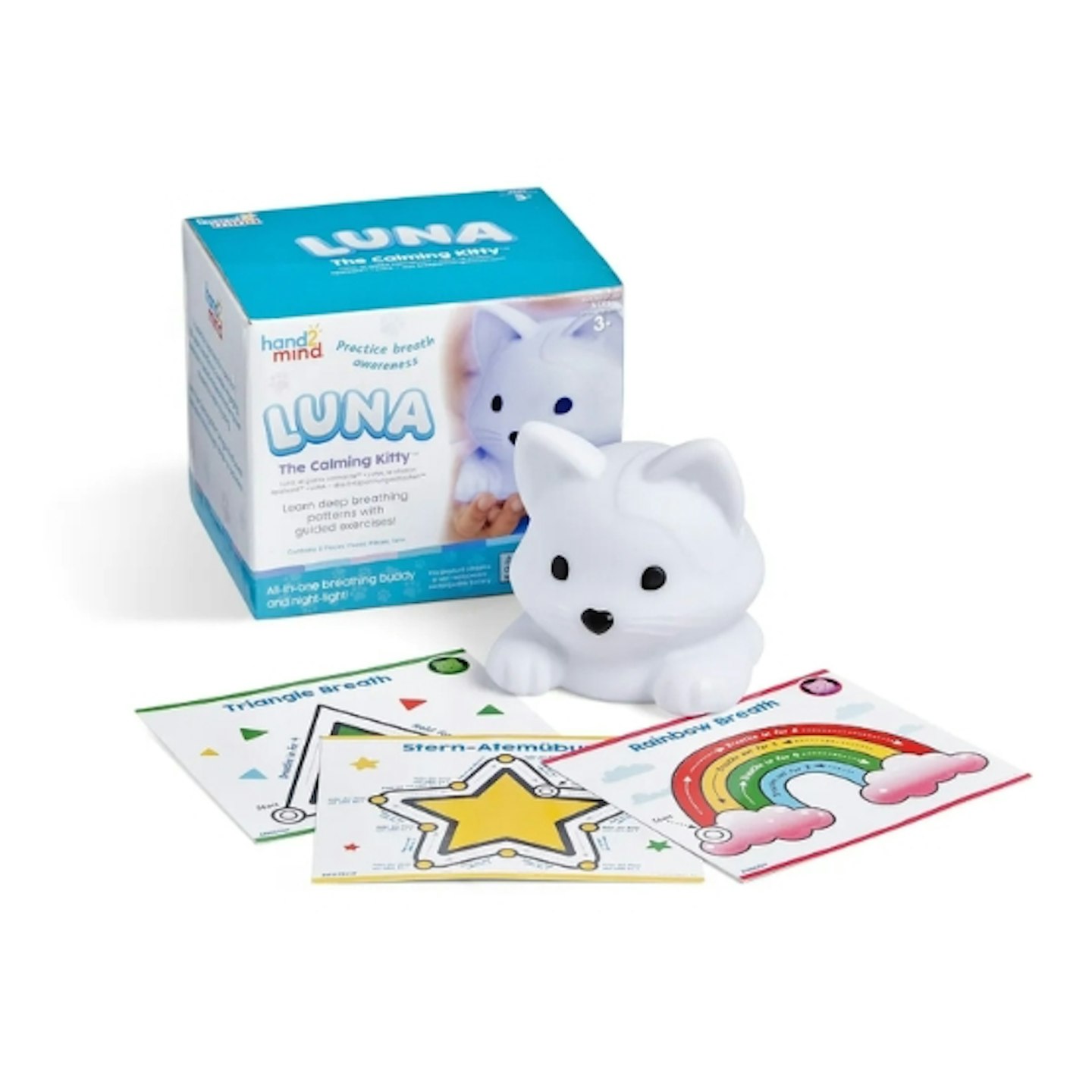 Learning resources
Learning resources www.learningresources.co.uk
It’s perfect for winding down at bedtime or when your little one needs to calm down after a meltdown. It’s soft and cuddly with a gentle breathing light that’s soothing to watch. Reviewers love how it helps kids relax and manage stress, especially those with anxiety or special needs.
Pros
- Helps kids calm down and relax, especially after those crazy tantrums or just before bedtime
- Makes deep breathing exercises fun with its cool breathing light feature
- Easy charging. No fuss, just plug it in
- Sturdy enough to handle those emotional moments without falling apart
Cons
- Some say the battery doesn’t last as long as they’d like, but it’s good enough for nightly use
Best toddler product for creativity
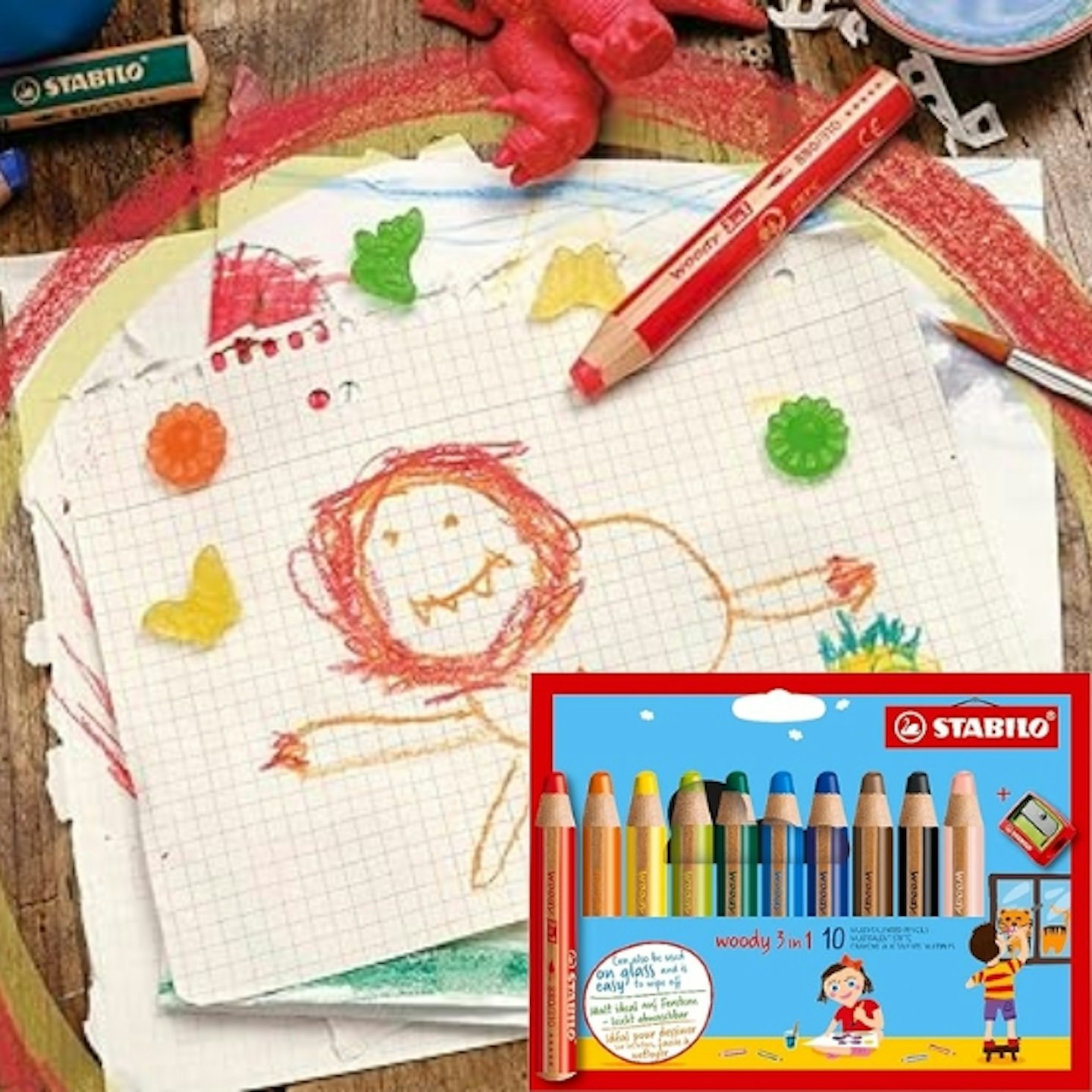 Amazon
AmazonA great way to unleash your child’s inner Picasso and help them navigate overwhelming emotions is through creative drawing. Researcher Jennifer Drake highlights that drawing is a powerful tool for helping children emotionally cope. We adore the STABILO Woody 3 in 1 Multi-Talented Pencil, which combines a coloured pencil, watercolour pencil, and wax crayon into one versatile tool. Perfect for little artists eager to let their creativity flow, this pencil works on glass and wipes off easily. Plus, it comes with a sharpener, making it a real winner. The vibrant, pigmented colours ensure that no effort is needed to make their art pop.
Pros
- The thick, ergonomic design is easy for small hands to grip, making drawing simple and enjoyable
- Works on various surfaces, including paper, glass, metal, and leather, and washes off easily with water
- Features a non-breakable lead, making it resilient for rough use
Cons
- Can be more expensive than standard coloured pencils
- Warning! Small parts. Not suitable for children under 3 years.
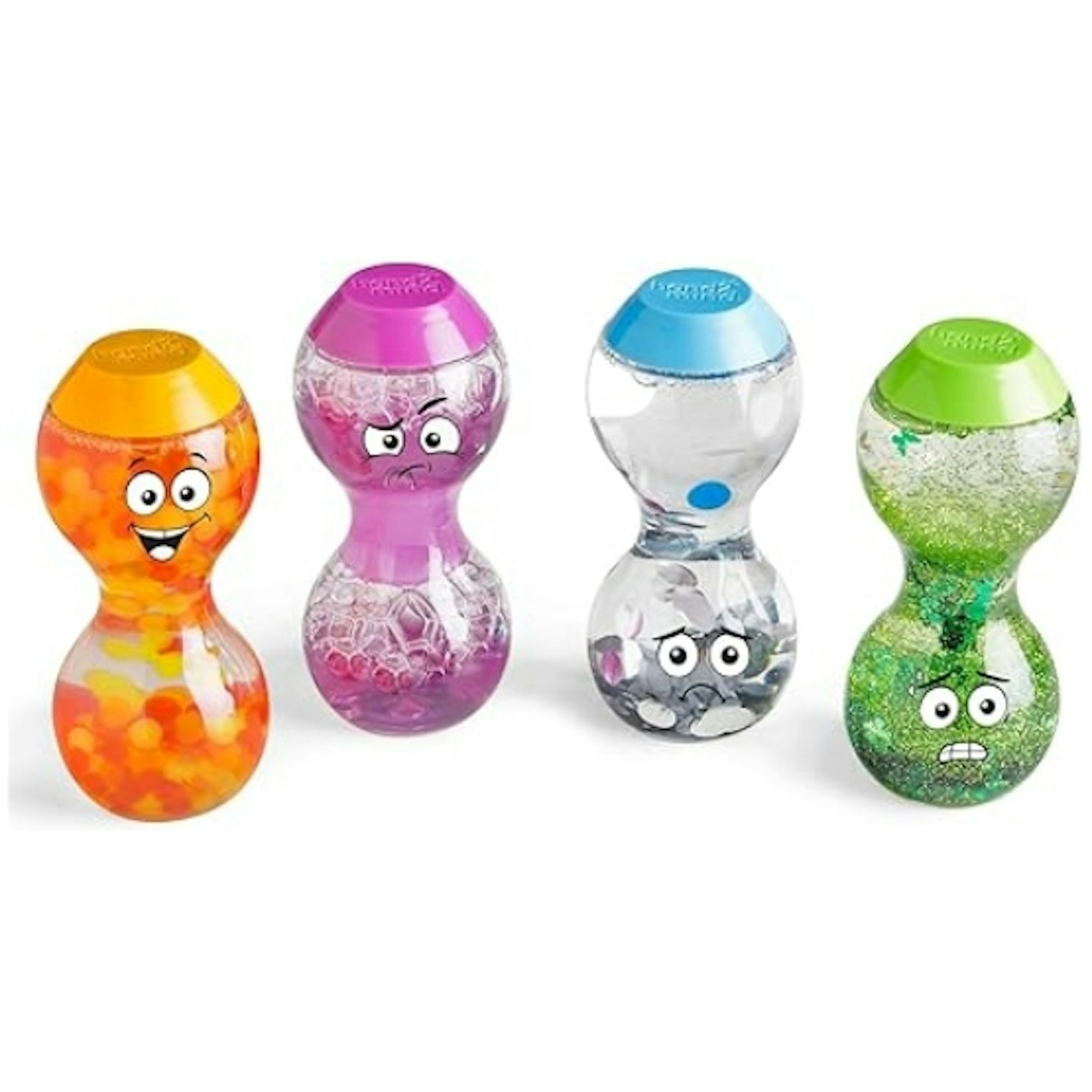 Amazon
AmazonBrilliant for allowing a child to show you how they are feeling before they are ready to speak about it. Then, when they feel ready, the bottles can be used to facilitate conversations around emotions, to recognise these feelings, and to identify strategies that can be used to deal with them. The instruction manual also has tips and tricks for using the bottles.
Pros
- Helps in visualising emotions through sensory experience
- Facilitates emotional conversations and strategies
- Different sensory experiences for different emotions (e.g., slow moving slime for impatient)
- Durable and spill-proof design
Cons
- We found that some children responded to these toys better than others
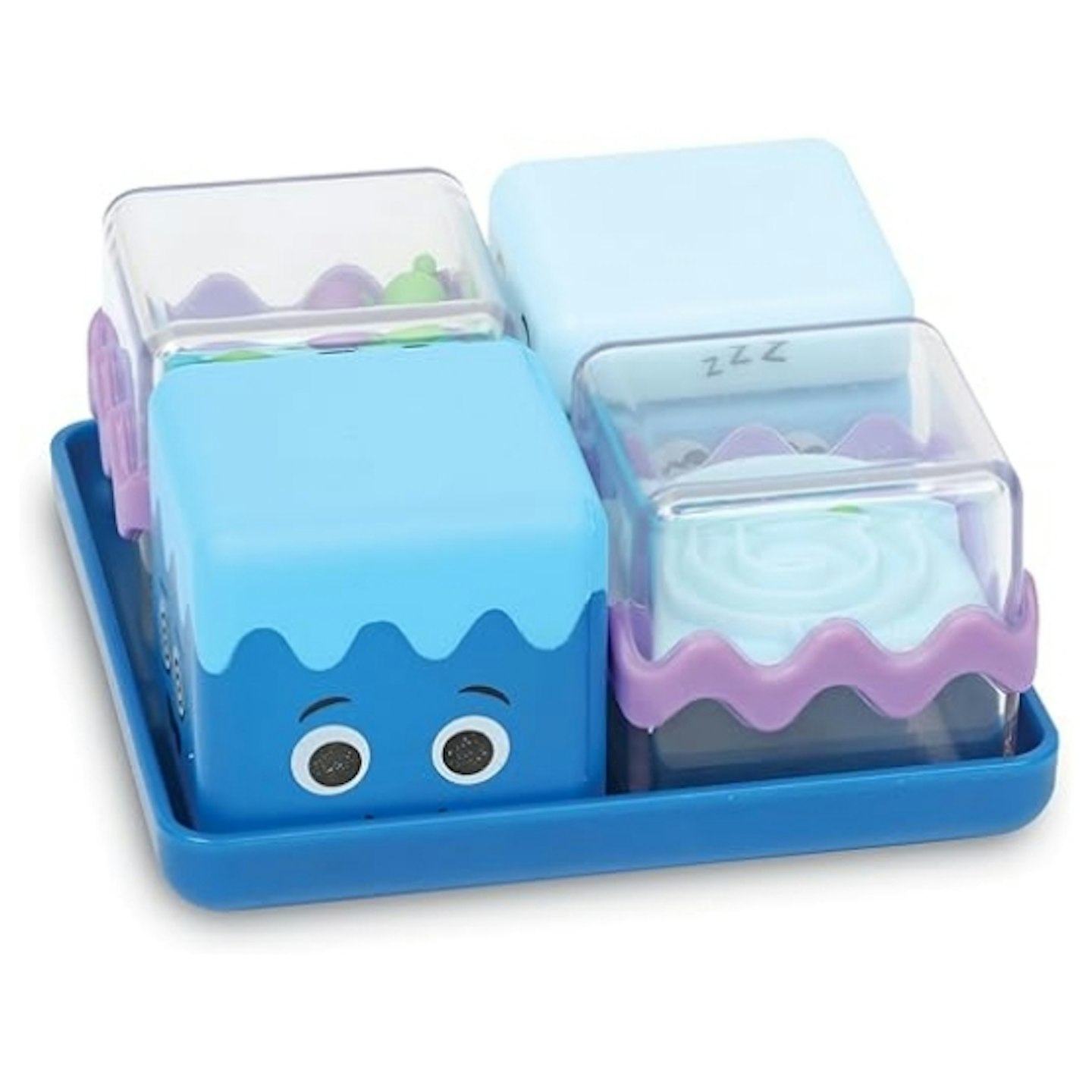 Amazon
AmazonThese cubes are a great addition to a calm-down zone. With expressive faces, they make playtime engaging while also helping children explore and understand emotions. Made from high-quality materials, they provide tactile stimulation that can help soothe little ones when they’re feeling overwhelmed.
Mother&Baby Senior Writer Hannah Carroll finds them especially useful for her sons during difficult conversations. She shared, “I often bring these out when I want to talk to one of my sons about something they struggle to express. Having something to play with helps them articulate their feelings. However, they don’t tend to use them much outside of these moments or during regular playtime.”
Pros
- Includes sensory faces to help express emotions
- High-quality materials for durability
- Suitable for various sensory needs
- Helps in calming and focusing attention
Cons
- Great for specfic times but not engaging enough to be an everyday toy
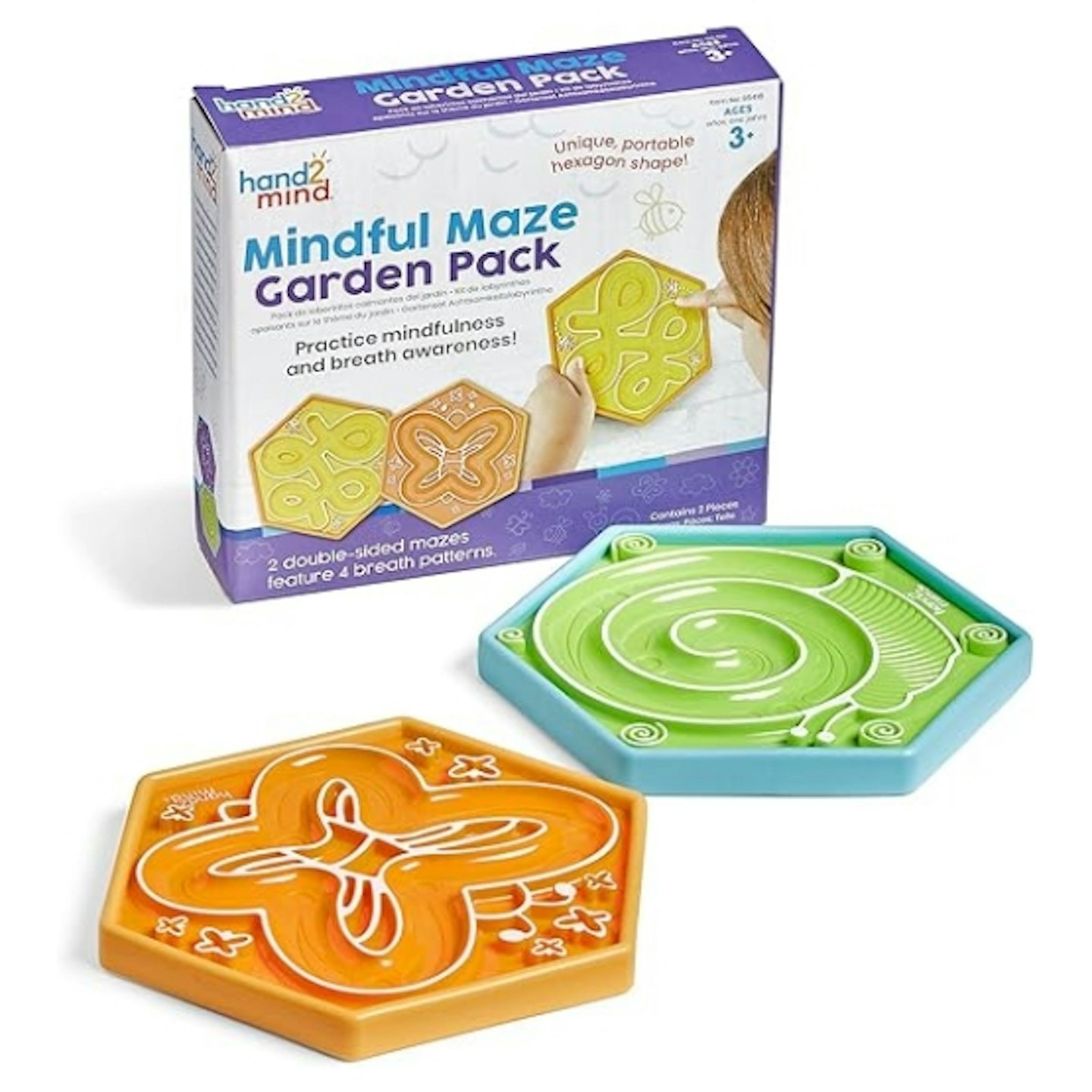 Amazon
AmazonThis is perfect for mindfulness and calming activities, especially in educational settings like preschools, but it’s just as effective at home. The tactile design helps toddlers visualise breathing techniques, making it a great tool for reducing stress and anxiety.
Our Senior Digital Writer, Hannah Carroll, even uses it herself when parenting feels overwhelming. “It’s so easy to lose your cool as a parent, especially with multiple young children. We can all do this together to reset when things get a little too loud and chaotic.”
Pros
- Engages children in therapeutic play
- Highly recommended for special educational needs
- Great toy to teach your child calm breathing
Cons
- Some children might not find it interesting
Best playing cards for toddlers' emotional development
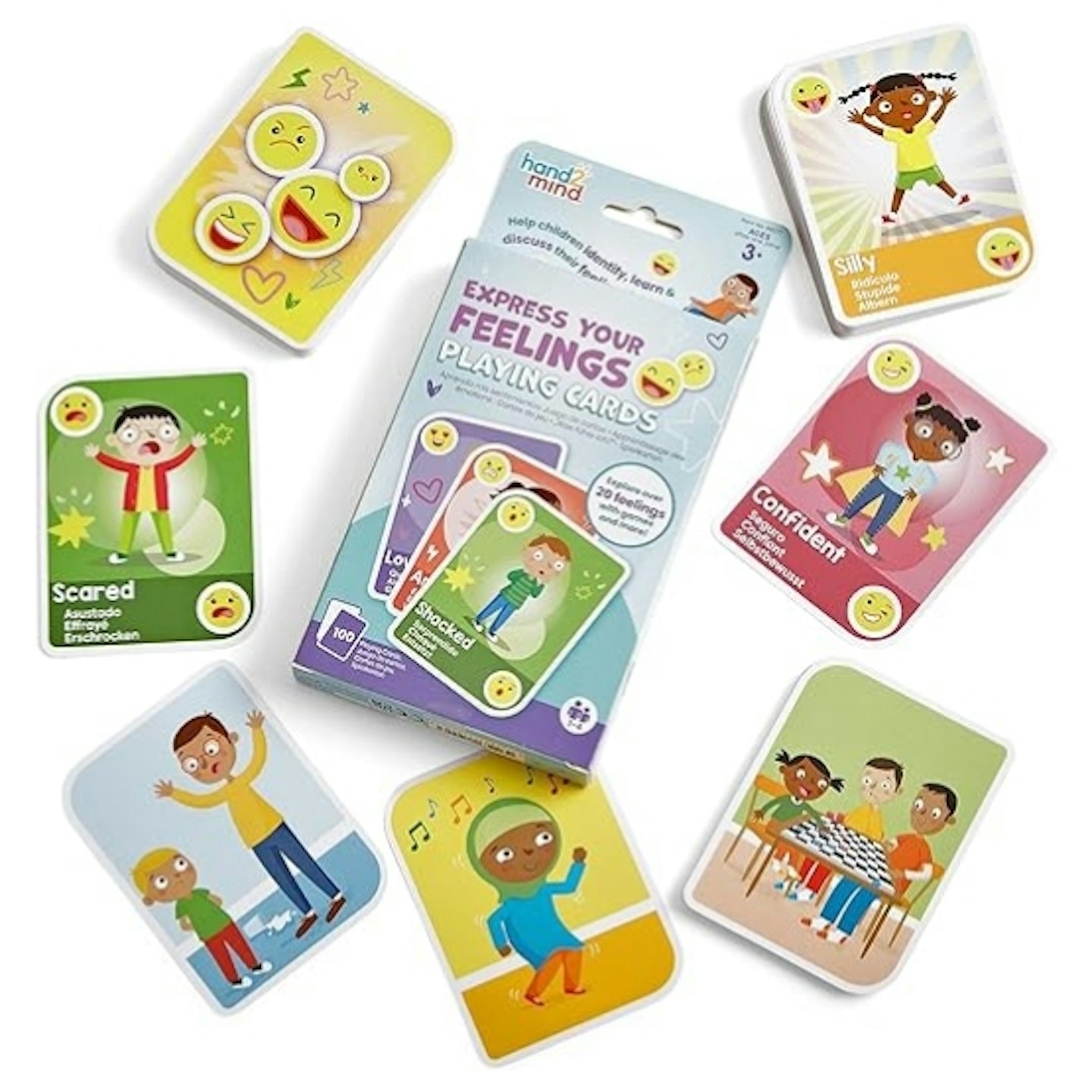 Amazon
AmazonThe Express Your Feelings Playing Cards are designed to help your toddlers identify and communicate their emotions effectively. The set of cards features colourful real-life scenarios and illustrations depicting various emotions and is used for activities that promote emotional literacy and empathy.
Pros
- Many users praise the cards for their engaging visuals and ease of use with young children
- Some parents and educators praise its effectiveness in classroom and therapy settings
- Engaging and easy-to-understand illustrations
- The cards are also diverse and also feature children with disabilities
Cons
- The children's faces on some of the carsd could easily be confused with other emotions
About the experts
Dr. Mark Rackley is a highly experienced psychologist who has worked with adults, adolescents, and families to navigate mental health challenges, addiction, and trauma. Now running his own private practice, he collaborates with top medical professionals to provide compassionate, expert care tailored to each individual's needs.
Dr Margot Sunderland is a senior associate of the Royal College of Medicine and a child psychotherapist with over thirty years' experience working with children and families. Author of over twenty books in child mental health, which collectively have been translated into eighteen languages and published in twenty-five countries.
Rachel Coler Mulhollandis a nationally certified counsellor and child mental health expert. She has provided mental health skills training for children with severe emotional disturbance at a school-based day-treatment program. She focuses much of her professional energy on resilience development, trauma-informed therapeutic interventions, assertive communication, interpersonal skills, and self-efficacy.
About the author
Anne Lora Scagliusi is a Senior Digital Writer at Mother & Baby. She is a Scotland-based journalist with over a decade of international writing experience, specialising in women’s health, maternal mental health, and wellness. Her work has been featured in Vanity Fair, Marie Claire, and Glamour and has appeared on several Vogue global editions. She is mum to a one-year-old bambino and lives between Italy and the UK. You can follow her on Instagram.
